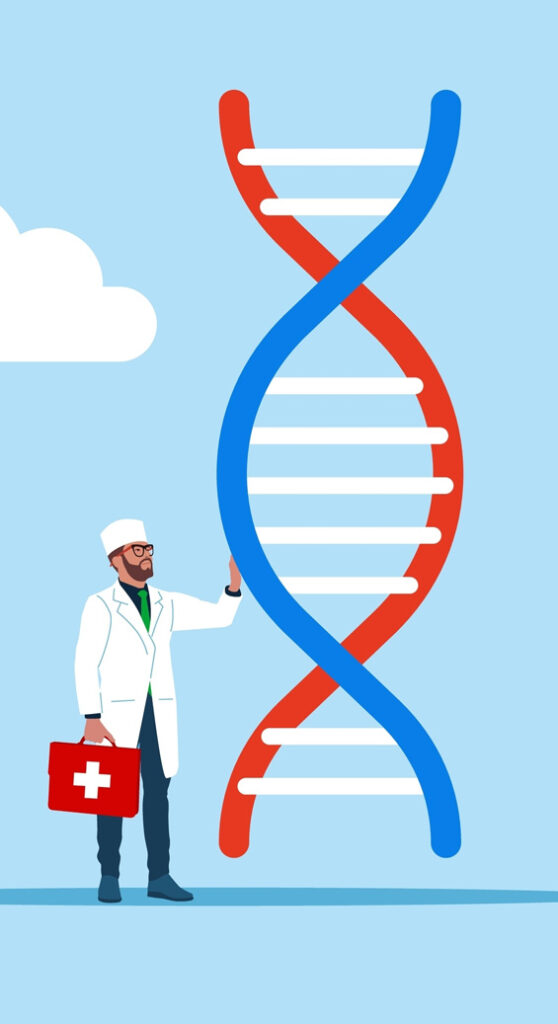How Two Scientists Won the Nobel Prize in Chemistry for Discovering the Fountain of Youth
For millennia, stories have been told of the Fountain of Youth. Even though its location remains a mystery, it may have been uncovered in the form of NAD+ by the scientific community.
In 1906, while researching fermentation, two scientists, William John Young and Arthur Harden, discovered Nicotinamide adenine dinucleotide (NAD+), this molecule is critical for the functioning of cells and a focal point for research into aging. This discovery foreshadowed the critical role that NAD+ plays in metabolic processes in humans.
Nicotinamide adenine dinucleotide (NAD+) transfers electrons between molecules in order to provide cells with energy. Its depletion has been associated with hallmarks of aging and may underlie a wide-range of age-related diseases, such as metabolic disorders, cancer and neurodegenerative diseases. Emerging evidence implicates that elevation of NAD+ levels may slow or even reverse the aspects of aging and also delay the progression of age-related diseases.
At the cellular level, NAD+ has a wide range of roles, including DNA damage repair, energy production, metabolic regulation, calcium signaling, epigenetic regulation of gene expression, and immunological functions. Additionally, NAD+ can repair and extend telomeres, the protective components at the end of DNA strands, which has the potential to reduce the speed of aging.
What is the function of NAD+?
As a coenzyme, NAD+ is critical to the mitochondria in our cells, the sources of energy, to produce the energy our cells require. This coenzyme allows the generation of chemical energy that our bodies can later make use of.
In order to carry out metabolic processes, such as glycolysis, the Krebs cycle, and the electron transport chain in the mitochondria, NAD+ is essential. NAD+, is a molecule found in every cell of the human body. This is analogous to the oil that is used to ensure that a car engine runs smoothly.
NAD+ connects enzymes and transfers electrons between molecules. It exists in two forms within cells: NAD+ and NADH. NAD+ gains electrons from other molecules and becomes an oxidizing agent, while NADH donates the electrons it carries and acts as a reducing agent.
NAD+ transfers electrons like a battery charger, providing cells with energy. This is important as electrons need to be recharged to become active again. Additionally, NAD+ can regulate enzyme activity, gene expression, and cellular signaling by facilitating electron transfer.
Role of NAD+ in mending DNA harm
Cellular mechanisms are in place to repair DNA damage; however, this process needs NAD+ and if the damage is too great, it can reduce the amount of NAD+ available, thus impairing other functions that need it.
The role of Poly (ADP-ribose) polymerase (PARP) in DNA repair is significant, but it needs NAD+ to be effective. As people age, the level of NAD+ decreases according to research. On top of that, the DNA damage raises which further elevates PARP and thus consumes even more NAD+. This creates a vicious cycle of NAD+ consumption from a reducing pool as people get older.
Slowing the Aging Process with NAD
The aging process is caused by the cumulative damage of oxidative stress from various sources. Sleep deprivation, exercise too strenuously, sun exposure, drinking alcohol, sickness and bad nutrition all contribute to the deterioration of our cells. Eventually, the increased oxidative stress will bring about a decrease in physical and cognitive abilities, a higher risk of diseases, and an irreversible aging process.
NAD+ functions as a catalyst, driving many reactions and processes, and is especially important for powering the mitochondria, which can be seen as the cell’s “engine.” It also helps to protect, strengthen, and repair the cell. In essence, NAD+ is jump-starting the “cellular engines.”
NAD+ levels diminishing results in a decrease in cell activity and an increase in oxidative stress, leading to the onset of aging.
NAD+ is a must-have; however, our supply is not inexhaustible. With the passing of time, our cells are exposed to several oxidative stressors, leading to a significant drop in NAD+ levels. It has been found that between 40 and 60, NAD+ can decline by as much as 50%. Thankfully, there are NAD+ infusions and supplements available to help combat the mental and physical decline due to aging.
By taking a high-quality NAD+ supplement, one can expect to improve their energy levels, brain function, and overall health and vitality. So, if you’re looking to maintain your youthfulness and combat the physical and mental decline due to aging, Terra Health Essentials’ NAD+ supplement is the perfect solution.





